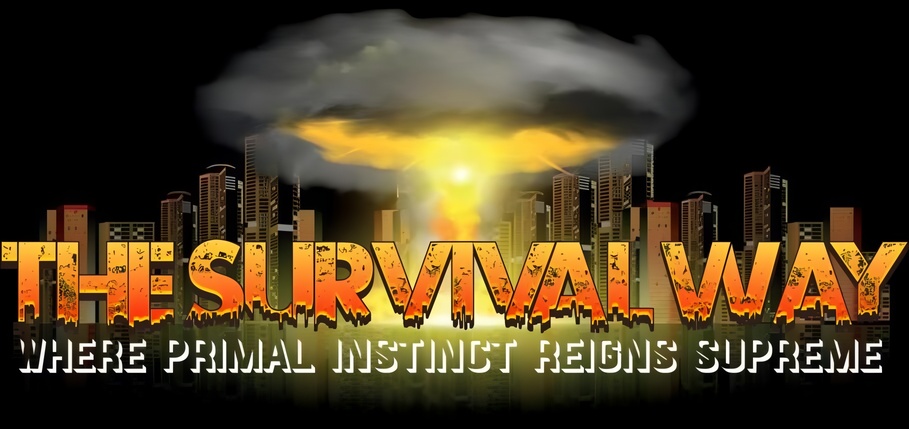
Communication & Teamwork For Survival
Learning communication and teamwork is not just about exchanging information; it’s about building connections that foster trust, collaboration, and resilience. In a world that can often feel chaotic and unpredictable, the ability to communicate effectively and work as part of a team is more crucial than ever.
Whether you find yourself in challenging situations at work, during community projects, or even when facing emergencies, honing these skills can be your lifeline. Imagine navigating through a crisis with a group of individuals who seamlessly coordinate their efforts while maintaining clear channels of communication.
This synergy doesn’t happen by chance—it requires practice and intention. As we explore the multifaceted nature of learning communication and teamwork for survival, you’ll discover how these essential skills can empower you to thrive in any situation life throws your way.
The Importance of Communication & Teamwork
Effective communication and teamwork are essential for success in any environment. They serve as the foundation for collaboration, innovation, and problem-solving. When team members communicate openly, ideas flow freely. This exchange fosters creativity and ensures that everyone feels valued.
It creates a sense of belonging which can boost morale significantly. Teamwork amplifies individual strengths while mitigating weaknesses. Together, diverse skills lead to enhanced performance. A group working harmoniously can tackle challenges more efficiently than individuals acting alone.
Moreover, effective communication helps prevent misunderstandings that can derail projects or create conflict within teams. Clear messaging establishes trust among members. In high-pressure situations, like emergencies or crises, solid teamwork becomes even more crucial for survival. The ability to rely on one another is what transforms uncertainty into action-oriented solutions.
How to Develop Effective Communication Skills
Effective communication starts with active listening. Pay attention to the speaker, and show genuine interest in their words. This builds trust and opens the door for honest dialogue. Next, clarity is key. Express your thoughts clearly and concisely. Avoid jargon or complex language that might confuse others.
Non-verbal cues also play a significant role. Body language, eye contact, and facial expressions can reinforce your message or create misunderstandings. Practice empathy by trying to see things from another’s perspective. Understanding feelings can bridge gaps in communication.
Feedback is essential for growth. Encourage open discussions about how messages are received and perceived so you can refine your approach over time. Be aware of your emotions during conversations; managing them helps maintain control over the discussion’s direction while fostering a positive environment.
Understanding the Dynamics of Teamwork
Teamwork is more than just a collection of individuals working side by side. It’s about the synergy created when diverse talents come together towards a common goal. Every team has its unique dynamics, influenced by individual personalities and communication styles.
Recognizing these differences is crucial for fostering collaboration. Roles within the team often shift based on strengths and weaknesses. This fluidity allows members to step up when needed, enhancing overall performance. Trust plays an essential role in effective teamwork. When team members feel safe to express ideas or concerns, they contribute more openly.
Conflict is natural but can be constructive if managed well. Addressing disagreements promptly can lead to innovative solutions rather than lingering resentment. Understanding these elements helps build a cohesive unit poised for success in any situation that demands collaboration and adaptability.
Common Barriers to Effective Communication & Teamwork
Poor communication can stem from various barriers. One major issue is jargon. When team members use technical terms that others don’t understand, it creates confusion. Another barrier is emotional disconnect. Personal feelings can cloud judgment and hinder open dialogue.
It’s essential for teams to recognize these emotions and address them constructively. Cultural differences also play a significant role. Diverse teams may have distinct communication styles or interpretations of messages, which can lead to misunderstandings if not managed well.
Additionally, physical distance in remote work scenarios might affect collaboration. Virtual meetings sometimes lack the nuances of face-to-face interactions, making connection more challenging. Time constraints often pressure individuals to rush conversations or skip important details altogether. This hurried pace can stifle clarity and prevent effective teamwork from flourishing.
Tips for Building a Strong Team
Building a strong team begins with clear communication. Establish open lines where everyone feels valued and heard. Encourage sharing ideas without fear of judgment. Diversity is another key element. A mix of skills, backgrounds, and perspectives can drive innovation.
Embrace these differences to foster creativity within the group. Set clear goals that resonate with every member’s strengths. Everyone should understand their role in achieving objectives while feeling accountable for their contributions. Regular team-building activities can strengthen relationships outside work tasks.
Fun interactions build trust and camaraderie, making collaboration smoother when challenges arise. Recognize achievements both big and small. Celebrating successes boosts morale and motivates team members to strive for excellence together.
Success Stories Through Communication & Teamwork
Success stories abound in various fields where communication and teamwork reign supreme. Consider the dynamic teams in healthcare. During crises, doctors and nurses rely on clear dialogue to save lives. Their ability to swiftly share information can make all the difference between life and death.
In corporate environments, companies that foster open communication often see remarkable outcomes. Teams collaborating seamlessly drive innovation forward. They create products that resonate with consumers because they understand their needs. Sports teams exemplify this principle too. A well-coordinated team communicates effectively during games, leading to victories against seemingly unbeatable opponents.
Even in community projects, effective collaboration transforms visions into reality. Neighbors come together for disaster relief efforts or local initiatives through shared goals and transparent discussions. These examples illustrate how powerful effective communication can be when combined with teamwork. Each success story highlights its importance across diverse settings.
Communication & Teamwork during Emergencies
During emergencies, the stakes are incredibly high. Clear communication can save lives and ensure a swift response. In chaotic situations, concise messaging becomes crucial. Every team member must be aware of their roles and responsibilities. Quick updates about changing conditions or new risks help maintain focus.
Effective teamwork fosters trust among members. When individuals feel supported, they’re more likely to voice concerns and share vital information. Relying on each other’s strengths enhances problem-solving capabilities. Technology plays a pivotal role as well. Utilizing tools like walkie-talkies or emergency apps allows for real-time updates that keep everyone aligned.
Additionally, practicing scenarios beforehand prepares teams for unexpected challenges. Regular drills create familiarity with protocols, making responses instinctual when it counts the most. Strong communication paired with cohesive teamwork strengthens resilience in crises. It transforms fragmented efforts into coordinated actions capable of navigating overwhelming circumstances.
Communication & Teamwork Strategies
Effective communication and teamwork strategies can transform a group into a cohesive unit. Start by establishing clear roles within the team. When everyone knows their responsibilities, it reduces confusion and increases accountability. Encourage open dialogue among team members.
Create an environment where individuals feel comfortable sharing ideas without judgment. This openness fosters creativity and problem-solving. Regular check-ins are essential for maintaining alignment. These brief meetings help gauge progress, address concerns, and celebrate small victories together.
Utilizing collaborative tools can streamline communication. Platforms like Slack or Trello keep everyone informed in real-time, making project management more efficient. Prioritize active listening during discussions. It not only shows respect but also ensures that all voices are heard, leading to better decision-making as a collective force.
Training & Practicing Communication & Teamwork
Training and practicing communication and teamwork are essential for survival, especially in high-pressure situations. Engaging in regular drills can help teams familiarize themselves with each other’s strengths and weaknesses. Simulations of emergency scenarios provide hands-on experience.
These exercises create a safe space to make mistakes, learn from them, and improve together. Incorporating role-playing can deepen understanding among team members. By stepping into another person’s shoes, individuals gain perspective on different roles within the team.
Feedback sessions after training exercises foster open dialogue. This allows team members to express concerns or suggestions for improvement without fear of judgment. Also beneficial is creating a culture that values continuous learning.
Encourage ongoing workshops and discussions about effective communication techniques that adapt as situations evolve. Consistent practice builds trust and confidence among teammates—key elements when facing real-life challenges together.
Conclusion: The Essential Role of Communication & Teamwork
Effective communication and teamwork are essential skills for survival in any environment. Whether you find yourself in a challenging situation at work or facing unforeseen crises, the ability to convey information clearly and collaborate with others can make all the difference.
Developing strong communication skills not only enhances your personal interactions but also fosters a positive team dynamic. Understanding how to navigate group dynamics can help prevent misunderstandings that often lead to conflict.
Identifying barriers is crucial as well. Be aware of issues like lack of clarity, cultural differences, or emotional tensions that might hinder effective dialogue. By recognizing these obstacles early on, teams can strategize solutions before problems escalate.
Building a cohesive team requires intentional effort. Encourage open discussions where every voice is heard and valued. Trust plays a key role here; cultivating it leads to greater collaboration and productivity among members. Success stories abound when organizations prioritize communication and teamwork.
They showcase how groups overcome adversity by leveraging their collective strengths during emergencies or everyday challenges alike. When training for survival situations, focussing on both individual communication techniques and group strategies prepares everyone involved for high-pressure scenarios effectively.
The journey toward mastering these vital skills may be ongoing, but they form the backbone of resilience in any endeavor—personal or professional. Embracing learning opportunities related to communication and teamwork lays down the foundation necessary for thriving amidst uncertainty.



